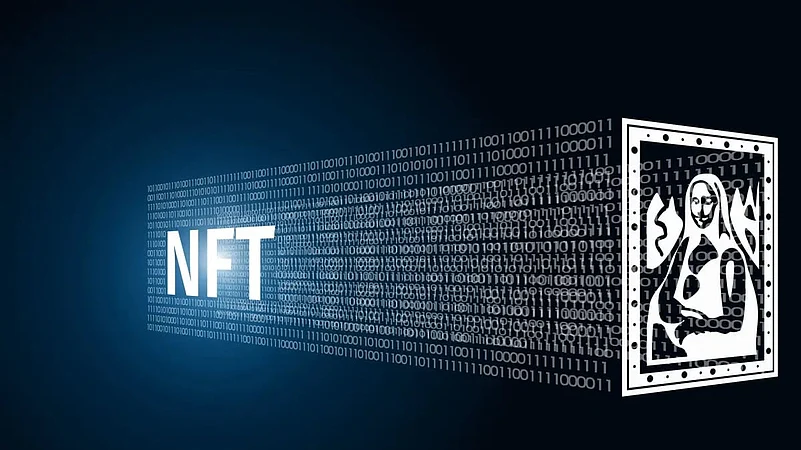Introduction
The Non-Fungible Token (NFT) market, once a hotbed of speculative excitement, has collided with a harsh reality in 2024. As the crypto industry basks in optimism with Bitcoin nearing $80,000, a fresh analysis delivers a sobering blow: 98% of NFTs launched this year have failed to turn a profit for investors. With just 0.2% posting positive returns, this stark figure underscores a market grappling with oversaturation, waning enthusiasm, and a desperate search for lasting value. What does this mean for NFTs as we approach Q2 2025?
The NFT Boom and Bust Cycle
NFTs burst into prominence in 2021, with digital art and collectibles commanding eye-popping sums—Beeple’s $69 million sale and CryptoPunks hitting seven figures set the tone. Fast forward to 2024, and the scene has darkened. The market, pegged at $471.90 billion for gaming NFTs alone this year, saw over 29,000 collections launched between January and August, per industry data. Yet, this deluge has swamped demand, rendering most projects unprofitable and dormant.
Data reveals that 98% of these NFT drops saw negligible trading post-launch, with prices often crashing 50% or more within days. A staggering 84% never exceeded their mint price, and even among “active” collections, only 11.9% turned a profit. This slump jars against the broader crypto recovery—while Bitcoin and altcoins rebound, NFTs languish in a bearish funk.
Why Are NFTs Struggling?

Several culprits fuel this 2024 NFT profitability crisis:
Market Oversaturation
A flood of new projects—thousands monthly—has drowned buyer interest. Most lack the originality or utility to cut through the noise, resulting in digital assets that barely muster ten trades in their debut week, a steep fall from past fervor.
Speculative Fatigue
The early NFT surge rode a wave of hype and rapid flips. By 2024, that bubble has popped. Investors, stung by 2022-2023 losses, now favor proven names like Azuki or Bitcoin Ordinals over risky new drops, draining speculative steam.
Lack of Utility
Many 2024 NFTs offer little beyond ownership bragging rights. Without in-game utility, real-world perks, or staking rewards, they falter at justifying their cost. Winning projects increasingly weave NFTs into broader ecosystems—a memo most launches miss.
Economic Pressures
Global economic tightness has crimped discretionary wallets. While crypto whales propel Bitcoin’s ascent, retail investors—once NFT trading’s lifeblood—have less to splash on unproven digital gambles.
The Rare Winners
In this sea of flops, a mere 0.2% of NFT projects defy the odds. These rare victors, often buoyed by robust communities or novel utility, include gaming NFTs and hybrid models tying tokens to physical goods. Collections like those in The Sandbox or paired with Adidas rewards hold steady, while Bitcoin Ordinals—notably NodeMonkes, up 50% in Q1 2025—shine. These cases signal that utility and engagement, not just rarity, are key to success.
Market Impact and Investor Sentiment
The ripple effects are stark. OpenSea, once the NFT marketplace titan, saw daily volumes plummet 76% from its 2024 peak, dipping below $10 million by March 2025. Minting has cooled too, with 64% of drops drawing fewer than ten buyers. Yet, resilience lingers: 66% of NFT holders plan to HODL into 2026, betting on a rebound, while 33% eye the exit, revealing a split sentiment.
Wider crypto trends widen this gap. Bitcoin’s rally and Ethereum’s Layer-2 breakthroughs siphon capital from NFTs, relegating them to a speculative sideline. Analysts caution that without a pivot to sustainable models, NFTs risk fading further.
Looking Ahead: Can NFTs Rebound?

As mid-2025 nears, the NFT market teeters on a pivot point. The 98% unprofitable stat is a loud alarm, not a final toll. Survivors will likely lean on community strength, real-world use cases, and ties to DeFi or gaming economies. Emerging regulatory clarity—e.g., in Japan—could rebuild trust, luring cautious institutions wary of past rug pulls.
The takeaway? Quality beats quantity. Investors chasing 2024 NFT profitability must zero in on utility-driven gems, not hype-fueled duds. While the 2021 glory days may not return, a leaner, purpose-built NFT niche could rise from 2024’s ashes.
Conclusion
The 2024 NFT market analysis lays bare a brutal truth: 98% of launches tanked, with only 0.2% yielding gains. Oversaturation, faded speculation, and utility gaps have left most NFTs in the red, even as crypto soars. Still, utility-powered outliers offer hope. For creators and investors, 2025 calls for a reset—value over volume—to unlock NFTs’ enduring potential in a shifting digital world.

